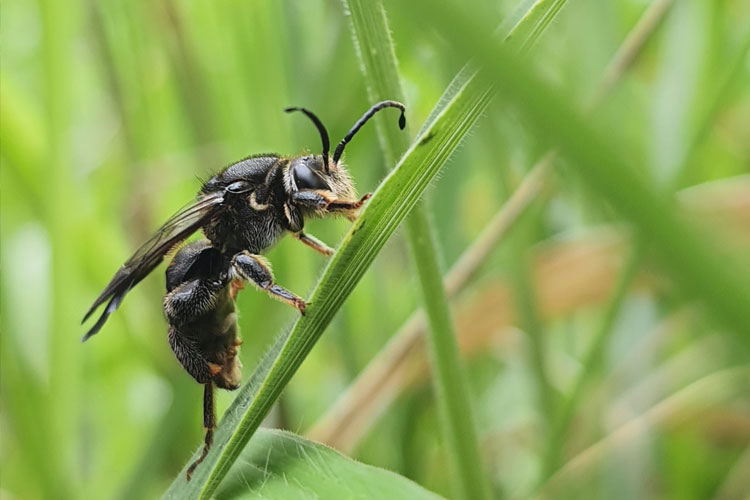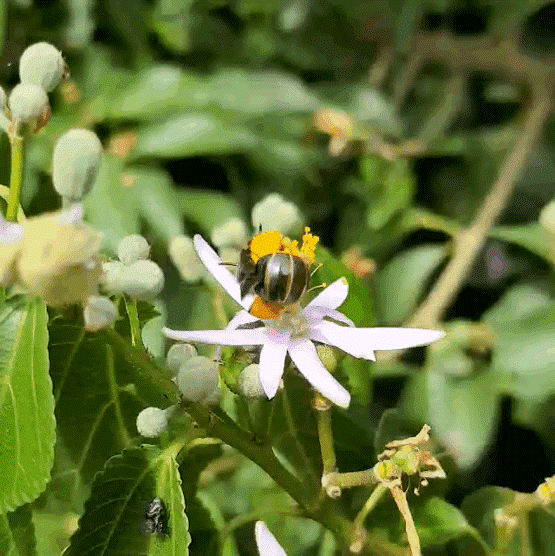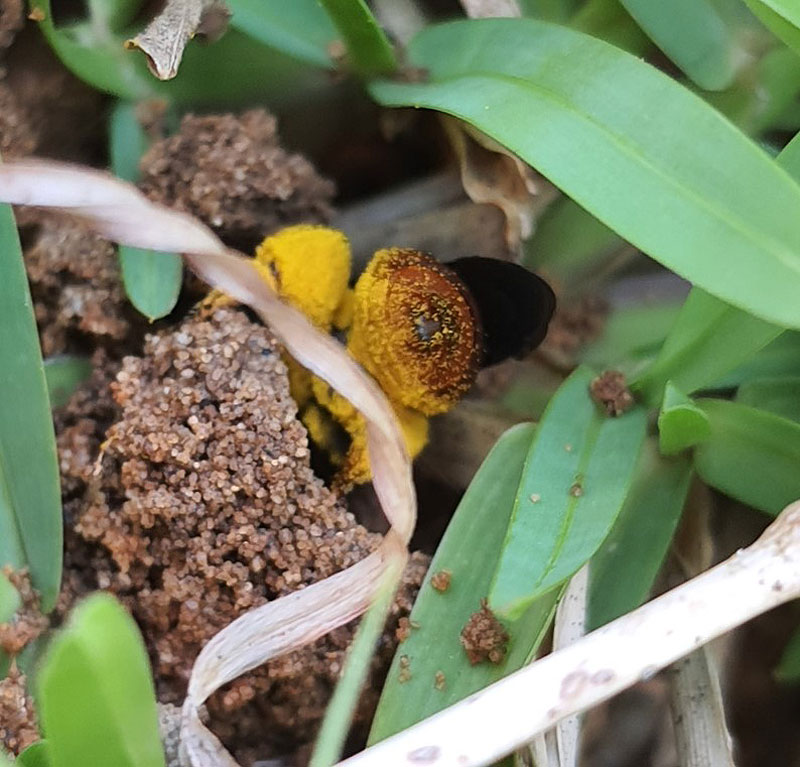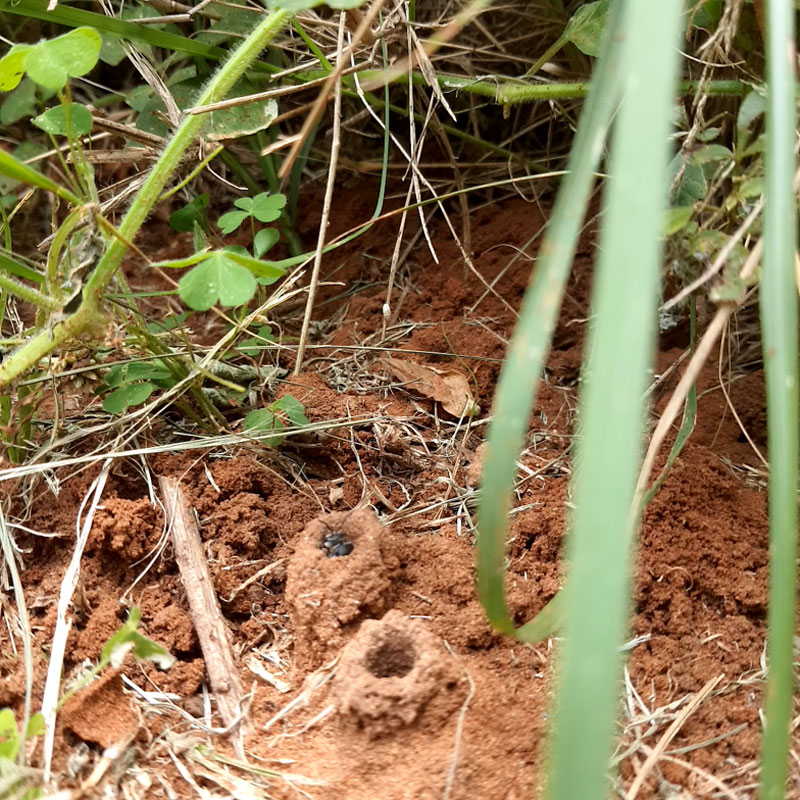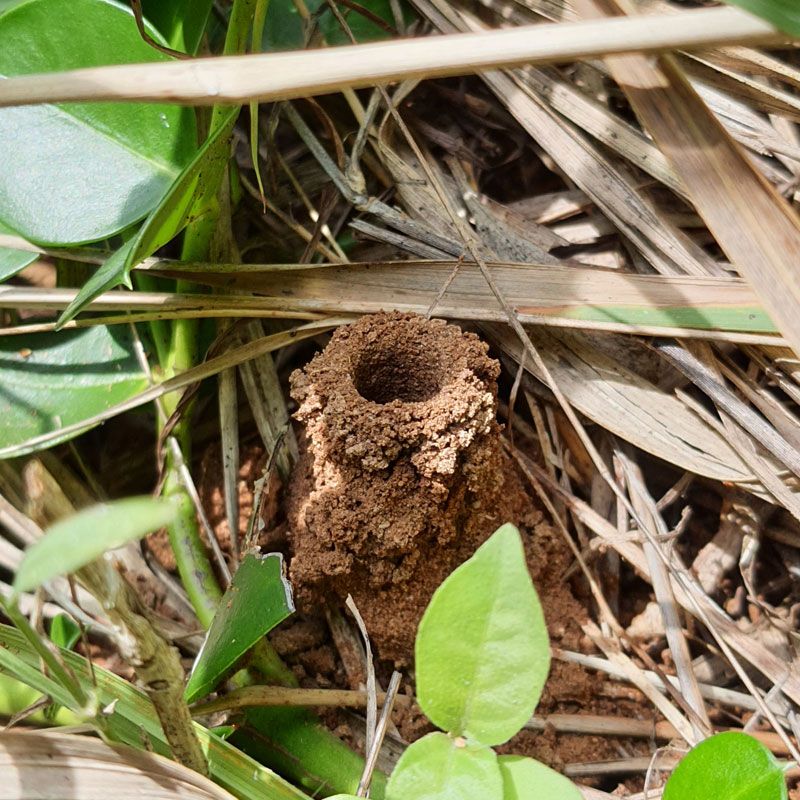Ground Bees on the estate
Not all the bees that occur at the Hawaan forest are typical honey bee species (Apis mellifera), In fact there many native forest bees which have all sorts of interesting evolutionally life histories. One particularly interesting group of bees are from Halictidae family. Sometimes known as sweat bees, Halictid bees are what are termed solitary bees. That is when a single female bee or ‘queen’ is responsible for laying eggs and the labour involved in nesting and provisioning their young. In social bees such as honey bees, the queen lays the eggs and drone females are responsible for provisioning. However, in the Halactid family there are also communal and eusocial behaviour, whereby non-reproductive females conduct tasks such for foraging and nest maintenance.
The Halictid bees that occur at the Hawaan forest are from the genus Liprotriches. They are considerable larger that honey bees (about 5-10mm) and nest in aggregations in the ground on the forest edge. Fortunately, they are not aggressive and will not sting, so getting a close look is easy and a beautiful thing to observe. Just do not try and catch them because females do have a sting.
Their life-cycle is relatively short, as these ground nesting bees fly, forage, mate and lay only during the peak of summer. They emerge from November and can be seen around the forest until sometime in March. During this period, like the troopers they are, they can be observed near the Bushshrike Junction. Their nest entrances are tiny turret like structures that lead onto a larger tunnel network. Within this network, the solitary female ‘queen bees’ provision cavities with pollen balls which comprise pollen mixed with floral oils or nectar, and there upon lay a single egg. Once the eggs hatch, larva will consume the pollen and develop into a white grubby pupae, which will there upon emerge in the following summer. Indeed, it not just bees that can be observed on this part of the pathway at Bushshrike Junction, the forest pollen the bees bring to their nests is attractive to other members of the forest insect community – including parasitic bees, wasps and rove beetles. At times, on hot December mornings, you’ll be sure to find the sargentii in 10 square metres. So for the remainder of this summer, be sure to check in on these bees and their community of friends, on the way back from your morning forest walk.
– article by Allister Starke

